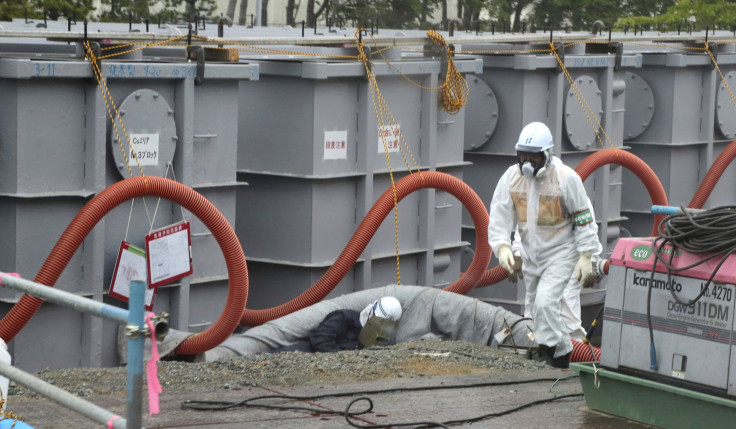Fukushima Plant Probably Leaking Contaminated Water Into Pacific Ocean: Japan's Nuclear Regulator

Radioactive water from Japan's Fukushima nuclear plant may be leaking into the Pacific Ocean since the March 2011 tsunami that breached the facility, the country’s Nuclear Regulation Authority said Wednesday, underscoring safety concerns over the crippled nuclear reactor, even as the plant’s operator sought to downplay the risk.
The Nuclear Regulation Authority’s officials said they have asked the nuclear plant’s operator, Tokyo Electric Power Co, or TEPCO, to examine the nature and extent of the leak, and assess the damage to the environment and on the local ecosystem, the Associated Press reported.
The nuclear watchdog said the leak is “strongly suspected” after its experts found that samples taken from coastal sea water and from the pit water, hinted that the contaminated water probably had leaked into the sea, the AP report said.
Nuclear Regulation Authority said it would appoint a panel of experts to determine on how to contain the damage while Shunichi Tanaka, chairman of the Nuclear Regulation Authority said he thinks that radioactive water has been contaminating the sea water since the accident.
"What's most important is to minimize the leak to the outside and reduce the impact on the human society," Tanaka said.
Several studies had earlier shown that radioactive material was found in the ground water and in the food chain in the area, suggesting a leakage of contaminated water into the sea and its surroundings. However, TEPCO, which has been reluctant to admit the possibility of contamination to sea water, has been accused of downplaying the issue.
On Wednesday, the company raised doubts about the nuclear watchdog’s findings about a likely leak. The company’s spokesperson said that the presence of high levels of cesium in the sample was not enough to conclusively prove that contaminated water was reaching the Pacific Ocean, the AP report said.
Nonetheless, the company had admitted, in April, that close to 120 tons of radioactive water may have leaked into the surrounding ground from a storage tank at the nuclear plant, but had maintained that “there is no leakage to the ocean since there is no drainage ditch near the reservoir.”
But, in May, the company said it had found high levels of the water-soluble element, strontium, in samples taken off the coast near the plant.
The facility was hit, in March 2011, by one of the worst nuclear disasters since the Chernobyl accident in 1986, after a giant tsunami triggered by an earthquake ravaged the nuclear plant and damaged its back-up generators and cooling system, leading to a meltdown of its reactors.
Nuclear reactors and the spent fuel rods have to be kept cool after their use, to prevent them from overheating and melting down, and since the disaster, TEPCO has been using massive quantities of water to cool the reactors, and the safe storage and disposal of the spent water has been a major challenge for the plant’s operator.
© Copyright IBTimes 2024. All rights reserved.






















